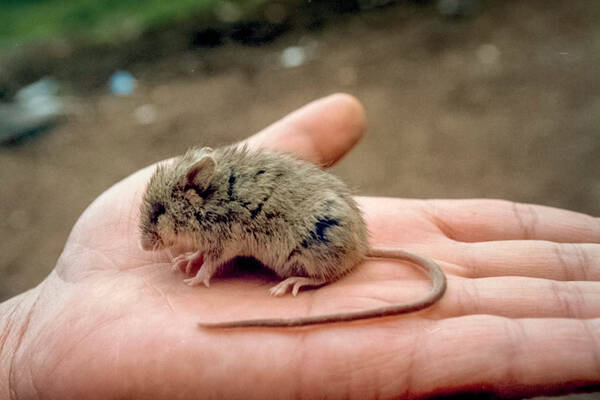Sicista tianschanica
IUCN
LCBasic Information
Scientific classification
- name:Sicista tianschanica
- Scientific Name:Sicista tianschanica,Sicista concolor,Rat
- Outline:Rodents
- Family:Rodentia Leptocephalus
Vital signs
- length:50-75mm
- Weight:
- lifetime:
Feature
The body shape is similar to that of a house mouse, with a very long tail, about 1.5 times the body length. The tail is covered with short hair and does not form a hair bundle at the end.
Distribution and Habitat
In China, it is only distributed in the northern slope of the Tianshan Mountains in Xinjiang and parts of northern Xinjiang. Abroad, it is distributed in the Tianshan Mountains in Kazakhstan and Kyrgyzstan. Therefore, it can be said to be a species endemic to the Tianshan Mountains.
It lives in grasslands, meadow grasslands, shrubs and forest edges at 1200-3200 meters.
Appearance
The main difference from the forest jerboa is that the posterior edge of the palatine bone exceeds the posterior edge of the upper molar row. The Tianshan hamster is a larger species in the worm subfamily. Body length 50-75mm. The tail is very long, greater than 1.5 times the body length, 77-113mm. Hind feet length 16-19mm. The ears are small, no more than 10mm. The back of the body is grey-brown, the belly is gray, and there is no black line in the center of the back to distinguish it from the long-tailed squirrel and prairie squirrel. The back of the tail is consistent with the back of the body, and the ventral surface is gray-white, but the boundary is not obvious.
Details
Tianshan scissorium belongs to the subfamily Sicistinae, with only one genus - sicissorium (<Sicista>), with a total of 13 species, 4 of which are in China. This species is a rare species, with very few specimens and a very low rate of capture in the wild. It is distributed in mountain grasslands, mountain forest edges, and subalpine meadows between 1200-3200m above sea level in the Tianshan Mountains. There is no dispute in classification, and there is no subspecies differentiation.
Scissorium is endemic to my country, distributed in Jilin, Heilongjiang, Sichuan, Qinghai and other provinces. In Qinghai Province, it is found in Minxian, Jiuquan, Qilian Mountains, Yumen, Sunan, Tianzhu, Shandan, Minle, Lintan, Luqu, Maqu and other places in Jiayuguan.
It is active at night and good at climbing. It feeds on stems, leaves, buds and seeds of plants, and also eats insects. It reproduces once a year and produces 3-6 cubs. Its natural enemies are mainly weasels, birds of prey and snakes.
This species has been included in the "List of Terrestrial Wildlife with Important Economic and Scientific Research Value under State Protection" issued by the State Forestry Administration of China on August 1, 2000.
Listed in the 2013 Red List of Endangered Species of the World Conservation Union (IUCN) ver3.1--Low Risk (LC).









